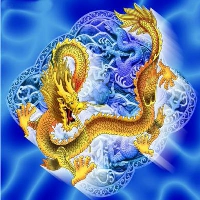傲慢与偏见英文简介
傲慢与偏见的内容简介英文急求《傲慢与偏见》的英文简介
Pride and Prejudice Jane Austen began her second novel, Pride and Prejudice, before she was twenty-one. It was originally titled First Impression because the appearances of the characters created the plot of the novel. However, because the novel is also concerned with the effects of the character's first impressions, that is their prejudice, Jane found the title Pride and Prejudice more appropriate. Pride and Prejudice, similar to other Jane Austen's novels, is written in gentle or Horacian satire. The main object of Jane's satire in the novel is the mercenary and the ignorance of the people, a common criticism of the 18th century. Characters in the novel which best carries these qualities are Mrs. Bennet, a foolish woman who talks too much and is obsess with getting her daughters married; Lydia Bennet, the youngest of the Bennet daughter who is devoted to a life of dancing, fashions, gossips and flirting; and Mr. Williams Collins, the silly and conceited baboon who is completely stupify by Lady Catherine in every aspect of his life that he has forgotten his own morals and duty. The tone of the novel is light, satirical, and vivid. Scenes such as Mr. Collins proposal to Elizabeth, and Lady Catherine visits to Lizzy at Longbourn, provides comic relief to the reader while at the same time revealing certain characteristics of the characters. For example, Lydia's lack of common sense and responsibility is revealed when she takes pride in being the first Bennet girl to be married. Lydia does not take into consideration the circumstance of her marriage, the personality of her husband, or the prospects of their marriage for the future. Elizabeth Bennet's ability to laugh off her misfortunate and to continue to be optimistic, considering her situation, also contributes to the tone of the novel. The point of view in Pride and Prejudice is limited omniscient; the story is told through Elizabeth, but not in first person. As a result, the mood of the novel lacks dramatic emotions. The atmosphere is intellectual and cold; there is little descriptions of the setting. The main actions of the novel are the interactions between opinions, ideas, and attitudes, which weaves and advances the plot of the novel. The emotions in the novel are to be perceived beneath the surface of the story and are not to be expressed to the readers directly. Jane's powers of subtle discrimination and shrewd perceptiveness is revealed in Pride and Prejudice; she is able to convey such a complex message using a simple, yet witty, style. The main subject in the novel is stated in the first sentence of the novel: "It is a truth universally acknowledged, that a single man in possession of a good fortune, must be in want of a wife." In this statement, Jane has cleverly done three things: she has declared that the main subject of the novel will be courtship and marriage, she has established the humorous tone of the novel by taking a simple subject to elaborate and to speak intelligently of, and she has prepared the reader for a chase in the novel of either a husband in search of a wife, or a women in pursuit of a husband. The first line also defines Jane's book as a piece of literature that connects itself to the 18th century period. Pride and Prejudice is 18th century because of the emphasis on man in his social environment rather than in his individual conditions. The use of satire and wit, a common form of 18th century literature, also contributes to label the book as 18th century. However, because Jane Austen had allowed personal feelings of the characters to be expressed in her work, she can also be classified as Romantic. In the figure of Elizabeth, Jane Austen shows passion attempting to find a valid mode of existence in society. Passion and reasons also comes together in the novel to show that they are complementary of marriage. There are seven different marriages presented in the novel. Excluding the Gardiner and the Lucas, the remaining five marriages contrasts each other to reveal Jane's opinions and thoughts on the subject of marriage. The marriage between Darcy and Elizabeth reveals the characteristics which constitutes a successful marriage. One of these characteristics is that the feeling cannot be brought on by appearances, and must gradually develop between the two people as they get to know one another. In the beginning, Elizabeth and Darcy were distant from each other because of their prejudice. The series of events which they both experienced gave them the opportunity to understand one another and the time to reconcile their feelings for each other. Thus, their mutual understanding is the foundation of their relationship and will lead them to a peaceful and lasting marriage. This relationship between Elizabeth and Darcy reveals the importance of getting to know one's partner before marrying. The marriage between Jane Bennet and Bingley is also an example of successful marriage. Jane Austen, through Elizabeth, expresses her opinion of this in the novel: "really believed all his [Bingley] expectations of felicity, to be rationally founded, because they had for basis the excellent understanding, and super-excellent disposition of Jane, and a general similarity of feeling and taste between her and himself." (Chapter 55) However, unlike Darcy and Elizabeth, there is a flaw in their relationship. The flaw is that both characters are too gullible and too good-hearted to ever act strongly against external forces that may attempt to separate them: "You [Jane and Bingley] are each of you so complying, that nothing will ever be resolved on; so easy, that every servant will cheat you; and so generous, that you will always exceed your income." (Chapter 55) Obviously, Lydia and Wickham's marriage is an example of an bad marriage. Their marriage was based on appearances, good looks, and youthful vivacity. once these qualities can no longer be seen by each other, the once strong relationship will slowly fade away. As in the novel, Lydia and Wickham's marriage gradually disintegrates; Lydia becomes a regular visitor at her two elder sister's homes when "her husband was gone to enjoy himself in London or Bath." Through their relationship, Jane Austen shows that hasty marriage based on superficial qualities quickly cools and leads to unhappiness. Although little is told of how Mr. Bennet and Mrs. Bennet got together, it can be inferred by their conversions that their relationship was similar to that of Lydia and Wickham - Mr. Bennet had married a woman he found sexually attractive without realizing she was an unintelligent woman. Mrs. Bennet's favoritism towards Lydia and her comments on how she was once as energetic as Lydia reveals this similarity. Mr. Bennet's comment on Wickham being his favorite son-in-law reinforces this parallelism. The effect of the relationships was that Mr. Bennet would isolate himself from his family; he found refugee in his library or in mocking his wife. Mr. Bennet's self-realization at the end of the novel in which he discovers that his lack of attention towards his family had lead his family to develop the way they are, was too late to save his family. He is Jane Austen's example of a weak father. In these two latter relationships, Austen shows that it is necessary to use good judgement to selec&>
 无所畏惧 2023-08-29 15:57:24
无所畏惧 2023-08-29 15:57:24









